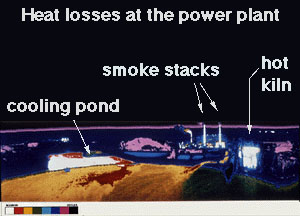ExploraTour - How to Build a Star

If nuclear fusion is occuring in the sun, why doesn't it blow up like an H-bomb?
The key to answering this puzzle is in the nature of the collision process that starts the proton-proton chain. It is so unlikely that two protons will collide in just the right way to produce deuterium that the fusion process proceeds at a very slow controlled rate.
But if this is true, I hear you thinking, how does it produce enough power to account for the sun's enormous energy output?
There are so incredibly many protons in the sun that at any given time the small fraction of them participating in the proton-proton chain is still a very large number. In fact, as you saw earlier, 100 trillion trillion trillion helium nuclei are being formed in the core every second. These helium nuclei are the final product of the proton-proton chain.











